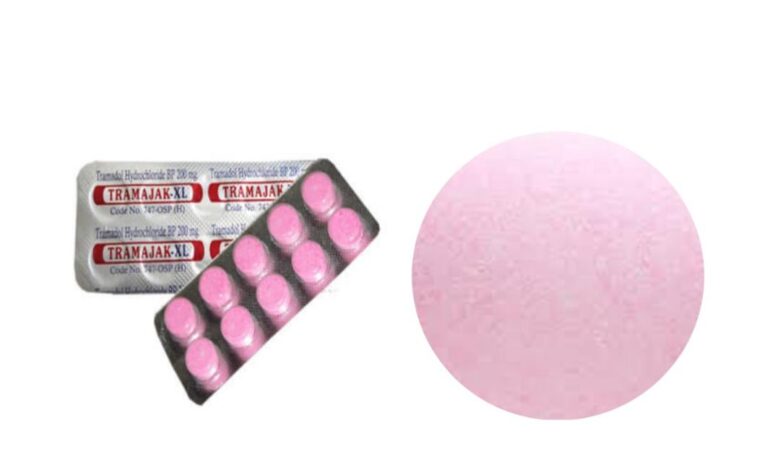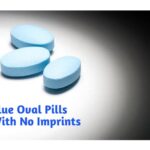Is The Round Pink Pill With No Imprint Tramadol?

It is wrong to assume a type of pill contains a particular active ingredient without proper identification. All approved prescription and over-the-counter solid, oral dosage form medications in the U.S. are required by the Food and Drug Administration (FDA) to have an imprint including tramadol an opioid pain medication used to treat moderate to moderately severe pain.
This also applies to biological drug products and homeopathic drug products, unless otherwise exempted in the FDA Code of Federal Regulations 206.7. Solid oral dosage forms are defined as capsules, tablets, or similar drug products intended for oral use.
The imprint code, when used in conjunction with the product’s size, shape, and color, permits the identification of the drug product, the active ingredient(s), strength, and the manufacturer or distributor of the product.
The purpose of regulating imprinting is to enable identification of the pill ingredients and drug manufacturer by law enforcement officials, health care providers and the patient or caregiver. An imprint is defined as any single letter, number, or combination of letters and numbers, including words, company names, National Drug Code, or a mark, symbol, logo or monogram. The drug manufacturer determines the imprint for specific drug products.
Identification of the drug product requires verification of its active ingredients and its dosage strength. Inclusion of a letter or number in the imprint, while not required, is encouraged as a more effective means of identification than a manufacturer’s symbol or logo by itself.
Homeopathic drug products are required only to bear an imprint that identifies the manufacturer and their homeopathic nature. There are no FDA-approved homeopathic products. Any product being sold in the U.S. that is marked as homeopathic is being marketed without FDA evaluation for safety or effectiveness.
There may be circumstances where two products have the same imprint code. For example, an imprint code might be reused after a drug product has been discontinued. Foreign products may also have the same code as an FDA approved imprint.
What if a Pill or Capsule Does Not Have an Imprint Code?
A solid oral dosage form drug product that does not meet the requirement for imprinting and is not exempt from the requirement may be considered adulterated and misbranded and may be an unapproved new drug as defined by the FDA.
Also, if a pill or capsule does not have an imprint and is not an approved medication it may be:
- a vitamin or other dietary supplement
- illegal drug of abuse
- foreign medication
- counterfeit drug
- or even candy.
Do Illegal Drugs, or Other Drugs of Abuse, Have Imprints?
Some illegal drugs, such as Ecstasy, come in tablet formulations of various colors and contain an imprint or design that is appealing to a younger age group, such as a flower, a smiley face, or other common logo.
In addition, other drugs of abuse such as LSD, are often concealed in candy like Sweet Tarts by placing a drop of the drug on the candy. LSD is also commonly placed on sheets of paper imprinted with a design, and then smaller squares of the paper are cut out for illicit trafficking. These imprints, because they are manufactured illegally, are not available for identification in the Pill Identification Wizard.
Prescription medications that are commonly abused, such painkillers, anti-anxiety benzodiazepines, or stimulants can be identified through the Pill Identification Wizard by entering the imprint codes, colors or shapes.
Patients should contact their doctor or pharmacist immediately if they cannot identify their medication.
Is The Round Pink Pill With No Imprint Tramadol?
There is a foreign pink pill with no imprints purported to contain Tramadol 200mg. This pill named Tramajak is sold illegally online and the FDA has not approved this pill. It’s never a good idea to take any pill that you’re not prescribed. It is even less advisable to take a drug when you don’t know what it is. It’s always best to talk to your doctor or pharmacist before taking any medication.
Various medications, dietary supplements, and alternative remedies can cause serious health problems, even if they’re approved for use or OTC. By taking an unknown pill, you are running the risk of drug interactions, complications of medical conditions you have, and counterfeit drugs that are not regulated.
The FDA is a great resource for advice about safely taking medications. Just remember: if you don’t know it, don’t swallow it.
Safety Information On Tramadol
Tramadol may be habit forming, especially with prolonged use. Take tramadol exactly as directed. Do not take more of it, take it more often, or take it in a different way than directed by your doctor. While taking tramadol, discuss with your health care provider your pain treatment goals, length of treatment, and other ways to manage your pain. Tell your doctor if you or anyone in your family drinks or has ever drunk large amounts of alcohol, uses or has ever used street drugs, or has overused prescription medications, or has had an overdose or if you have or have ever had depression or another mental illness. There is a greater risk that you will overuse tramadol if you have or have ever had any of these conditions. Talk to your health care provider immediately and ask for guidance if you think that you have an opioid addiction or call the U.S. Substance Abuse and Mental Health Services Administration (SAMHSA) National Helpline at 1-800-662-HELP.
Tramadol may cause serious or life-threatening breathing problems, especially during the first 24 to 72 hours of your treatment and any time your dose is increased. Your doctor will monitor you carefully during your treatment. Tell your doctor if you have or have ever had slowed breathing or asthma. Your doctor will probably tell you not to take tramadol. Also tell your doctor if you have or have ever had lung disease such as chronic obstructive pulmonary disease (COPD; a group of diseases that affect the lungs and airways), a head injury, brain tumor, or any condition that increases the amount of pressure in your brain. The risk that you will develop breathing problems may be higher if you are an older adult or are weak or malnourished due to disease. If you experience any of the following symptoms, call your doctor immediately or get emergency medical treatment: slowed breathing, long pauses between breaths, or shortness of breath.
When tramadol was used in children, serious and life-threatening breathing problems such as slow or difficulty breathing and deaths were reported. Tramadol should never be used to treat pain in children younger than 12 years of age or to relieve pain after surgery to remove the tonsils and/or adenoids in children younger than 18 years of age. Tramadol should also not be used in used in children 12 to 18 years of age who are obese or who have a neuromuscular disease (disease that affects the nerves that control voluntary muscles), a lung disease, or obstructive sleep apnea (condition in which the airway becomes blocked or narrow and breathing stops for short periods during sleep) as these conditions may increase their risk of breathing problems.
Taking certain other medications during your treatment with tramadol may increase the risk that you will experience breathing problems or other serious, life threatening breathing problems, sedation, or coma. Tell your doctor if you are taking or plan to take any of the following medications: amiodarone (Nexterone, Pacerone); certain antifungal medications including itraconazole (Onmel, Sporanox), ketoconazole (Nizoral), and voriconazole (Vfend); benzodiazepines such as alprazolam (Xanax), diazepam (Diastat, Valium), estazolam, flurazepam, lorazepam (Ativan), and triazolam (Halcion); carbamazepine (Carbatrol, Epitol, Equetro, Tegretol, Teril); erythromycin (Erytab, Erythrocin); certain medications for human immunodeficiency virus (HIV) including indinavir (Crixivan), nelfinavir (Viracept), and ritonavir (Norvir, in Kaletra); medications for mental illness, nausea, or pain; muscle relaxants; phenytoin (Dilantin, Phenytek); quinidine (in Nuedexta); rifampin (Rifadin, Rimactane, in Rifamate); sedatives; sleeping pills; or tranquilizers. Your doctor may need to change the dosages of your medications and will monitor you carefully. If you take tramadol with any of these medications and you develop any of the following symptoms, call your doctor immediately or seek emergency medical care: unusual dizziness, lightheadedness, extreme sleepiness, slowed or difficult breathing, or unresponsiveness. Be sure that your caregiver or family members know which symptoms may be serious so they can call the doctor or emergency medical care if you are unable to seek treatment on your own.
Drinking alcohol, taking prescription or nonprescription medications that contain alcohol, or using street drugs during your treatment with tramadol increases the risk that you will experience these serious, life-threatening side effects. Do not drink alcohol, take prescription or nonprescription medications that contain alcohol, or use street drugs during your treatment.
Tell your doctor if you are pregnant or plan to become pregnant. If you take tramadol regularly during your pregnancy, your baby may experience life-threatening withdrawal symptoms after birth. Tell your baby’s doctor right away if your baby experiences any of the following symptoms: irritability, hyperactivity, abnormal sleep, high-pitched cry, uncontrollable shaking of a part of the body, vomiting, diarrhea, or failure to gain weight.
If you are taking the tramadol extended-release tablet or capsule, swallow them whole; do not chew, break, divide, crush, or dissolve them. Swallow each tablet right after you put it in your mouth. If you swallow broken, chewed, crushed, or dissolved extended-release preparations, you may receive too much tramadol at once instead and this may cause serious problems, including overdose and death.
Do not allow anyone else to take your medication. Tramadol may harm or cause death to other people who take your medication, especially children.
Your doctor or pharmacist will give you the manufacturer’s patient information sheet (Medication Guide) when you begin treatment with tramadol and each time you refill your prescription. Read the information carefully and ask your doctor or pharmacist if you have any questions. You can also visit the Food and Drug Administration (FDA) website (http://www.fda.gov/Drugs/DrugSafety/ucm085729.htm) or the manufacturer’s website to obtain the Medication Guide.





